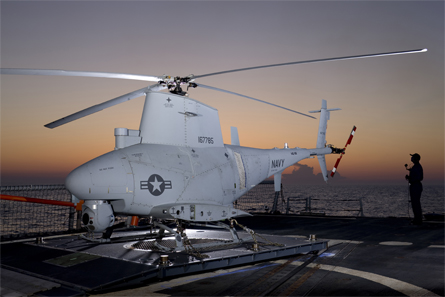A Northrop Grumman MQ-8B Fire Scout has accomplished the systems’ greatest number of flights to date in a single day, racking up 18h of flight time in a 24h time period.
The series of flights represent the most intensive operations tempo the unmanned system has yet undergone, including during testing periods. The flights were conducted by US Navy sailors on the USS Halyburton, which is hosting the MQ-8 for operational evaluation in combat areas. Northrop, which issued a statement trumpeting the flights, was unavailable to add further details.
"We've continually worked with the navy to enhance Fire Scout since its last deployment to meet these types of operational needs," says George Vardoulakis, Northrop's vice-president for tactical unmanned systems. "These flights not only demonstrated Fire Scout's maturity, it showed how the system provides a much-needed extension for gathering crucial information during peacekeeping or wartime missions."
 |
|---|
© US Navy |
The MQ-8B, equipped for short-range reconnaissance, is on its first-ever combat deployment aboard the Halyburton, which is currently taking part in NATO anti-piracy patrols off the coast of Somalia.
Shipboard testing, during which the helicopter was used to successfully intercept a drug-smuggling speedboat, was completed in April 2010. The MQ-8 is equipped with the FLIR Systems Brite Star II camera system and other reconnaissance equipment.
Though a record for the system, the MQ-8B has been the subject of criticism over its lack of performance. On 11 April, Northrop briefed reporters at the Navy League’s Sea Air Space Exhibition on an internally-funded successor to the type in anticipation of a possible navy requirement. The successor aircraft, based around a heavily modified Bell 407 helicopter, carries the same sensor package as the MQ-8B but provides drastically increased performance.
Boeing’s YMQ-18A Hummingbird, a competing unmanned helicopter, made an 18.7h non-stop flight in 2009.
Source: FlightGlobal.com























